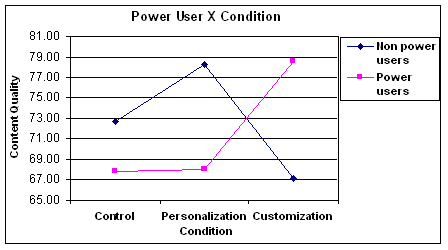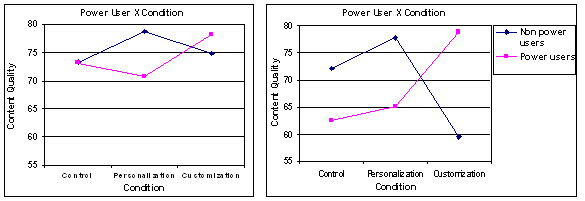Media Effects Research Lab - Research Archive
Is it Tailoring or is it Agency?
Student Researcher(s)
Sampada Marathe (Ph.D Candidate);
Faculty Supervisor
This paper was presented at the annual convention of the Association for Education in Journalism and Mass Communication, San Francisco, CA, 2006.
Introduction
Mass communication on the internet is getting increasingly demassified with the rapid diffusion of customization technologies. From the background color of our computer desktops to the faceplates on our cell phones and organization of music on iPods, we are now able to individualize a wide variety of products and services in this digital age. Theoretical understanding of the psychological appeal of customization, however, is still in its nascent stages. What makes customization so appealing? Is it the automatic tailoring of content (personalization) to meet one’s individual needs and preferences? Or the sense of agency and ownership created by acting as one’s own gatekeeper (customization)? Or is it simply a novelty effect? This paper tests these competing theoretical propositions by way of a between-subjects experiment (N = 85) which exposed Power users as well as regular users to a news-aggregator Website that was either personalized, customized, or neither.
Research Question and Hypothesis
If tailoring (i.e. obtaining tailored content) is the underlying mechanism, then there should be no differences between Personalization (P) and Customization (C) in promoting attitudes toward content, but both would be more positive than a control Website (W) that does not feature tailoring at all. That is, tailoring would predict P = C > W.
H1a: Customization and Personalization will not differ in their contribution to positive attitudes toward content, but both will be higher than a control condition.
But, if the sense of ownership and identity imbued by the self acting as the source is psychologically critical, then we would expect support for the agency argument, with results showing the following pattern: C > P = W.
H1b: Customization is significantly higher than Personalization, with the latter being no different from the control, in promoting positive attitudes toward content.
H2: Power Users will show more positive attitudes toward content in customization condition over personalization condition whereas the reverse would be true for non-Power Users.
H3: Results will be moderated by users’ familiarity with the customizable site.
Method
In order to test these hypotheses, we conducted a 3 (C, P, W) x 2 (Power User, Non-Power User) fully-crossed factorial experiment whereby study participants were exposed to Google News over two sessions. They were either exposed to the Website as is control condition (W condition) or a personalized version (P condition) in the second session (based on data of their browsing behavior during the first session) or a customized version (C condition). They were then asked to fill out a paper-and-pencil questionnaire measuring their attitudes toward the news content on the site.
Results
The results showed no main effects for customization manipulation, thus providing no support for global hypotheses H1a and H1b. However, this result is likely to be due to significant two-way and three-way interactions indicating the moderating role of Power User-ship and Site Familiarity upon users’ responses to customization, lending support to H2 and H3. In general, we found C > P for Power Users and P > C for Non-Power Users.

Power Usership X Condition interaction

Power Usership X Condition X Previous Visit interaction
Conclusions
In terms of the theoretical explanations motivating this research, data lend support to the mediating role of agency in the case of Power Users and to that of tailoring in the case of Non-Power Users. That is to say, relatively inexpert users are likely to be impressed with a Website if it presents content tailored to their interests, but Power Users will not be. For them, the site ought to provide the additional facility to express their agency by specifying their content preferences and interests. Only then will they be positively disposed toward the site. On the flip side, while Power Users do not make a distinction between P and W conditions (they are equally unimpressed with both), non-Power Users tend to penalize the site for demanding customization by rating it more negatively than the control site. This tendency is however moderated by users’ familiarity with the site, with only those users who have visited the site before showing the negative trend. The fact that first-time users did not show this might be an indirect indication of novelty effect. They were perhaps impressed by the affordance made possible by customization technology but may not have been able to get it to deliver high-quality content.
For more details regarding the study contact
Dr. S. Shyam Sundar by e-mail at sss12@psu.edu or by telephone at (814) 865-2173

